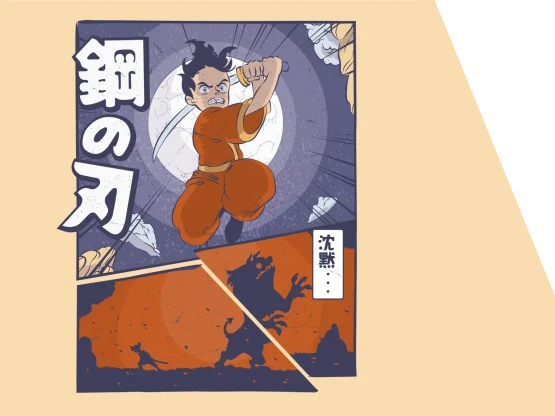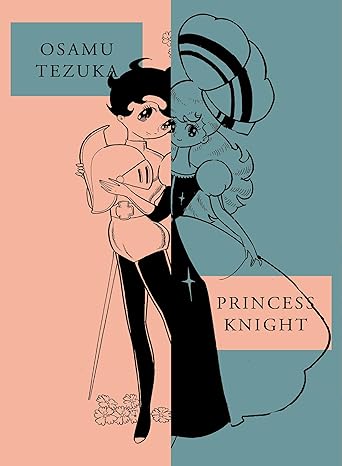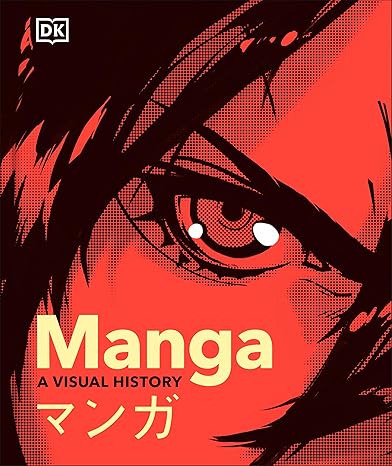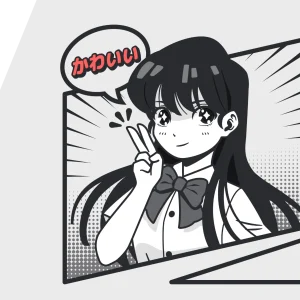
Author: ShiroiYozora 05.09.2024
From Scrolls to Smartphones: The Surprising Evolution of Manga Through the Ages
Contents
- 1 From Scrolls to Smartphones: The Surprising Evolution of Manga Through the Ages
- 2 Manga Zone!
- 2.0.1 Manga and More!
- 2.0.1.1 Unleash Your Inner Ninja: Best Naruto Gadgets from Amazon That’ll Make You Feel Like a Hokage
- 2.0.1.2 From Swords to Style: 10 Coolest Kimetsu no Yaiba Accessories That Will Make You Feel Like a Demon Slayer
- 2.0.1.3 From Doodles to Masterpieces: Unveiling the 5 Best How-To-Draw Manga Books That’ll Make You Go Viral
- 2.0.1.4 Bleach Chic: 9 Amazon Finds That’ll Make Your Inner Anime Fan Go Bankai!
- 2.0.1.5 Outsmart Light Yagami: 7 Best Death Note Gadgets That Even He Couldn’t Resist
- 2.0.1.6 Manga Madness: Unveiling the Top 3 Legal Sites That’ll Change Your Reading Game!
- 2.0.1.7 Top 10 Attack On Titan Gadgets from Amazon
- 2.0.1.8 Top 10 Dragon Ball Gadgets from Amazon
- 2.0.1.9 One Piece Top 10 Anime/Manga gadgets from Amazon
- 2.0.2 Blog Posts!
- 2.0.2.1 From Outcast to Hero: How Naruto’s Journey Mirrors Real-Life Struggles
- 2.0.2.2 The Divine Delusion: Unraveling Light’s God Complex in Death Note
- 2.0.2.3 From Human to Ghoul: How Tokyo Ghoul Redefines the Meaning of Life
- 2.0.2.4 From Studio Ghibli to Sailor Moon: The Surprising Impact of Cats in Anime
- 2.0.2.5 From East Blue to the New World: Exploring One Piece’s Incredible Saga
- 2.0.2.6 Forget Everything You Thought You Knew: The Shocking Truth About What Manga Books Are
- 2.0.2.7 From Scrolls to Smartphones: The Surprising Evolution of Manga Through the Ages
- 2.0.1 Manga and More!
A Journey Through Time: The Beginnings of Manga
Hey there, manga lovers and Japan enthusiasts! Have you ever wondered about the rich history behind those colorful pages you flip through? Well, buckle up, because we're about to take a wild ride through the fascinating world of manga's evolution!
Let's start at the very beginning. The history of manga isn't just a tale of the last century – it stretches back much further than you might think! Picture this: it's 12th century Japan, and Buddhist monks are creating scrolls with animals acting like humans. These scrolls, known as "Chōjū-jinbutsu-giga" (Animal-person Caricatures), are often considered the earliest ancestors of modern manga.
This site contains affiliate links to products. We may receive a commission for purchases made through these links. Learn more.
The Edo Period: A Creative Explosion
Fast forward to the Edo period (1603-1867), and we see the birth of "ukiyo-e" – woodblock prints and paintings that depicted the "floating world" of entertainment districts. These weren't exactly manga as we know it today, but they laid important groundwork. Artists like Hokusai (you might know his famous "The Great Wave off Kanagawa") created multi-volume collections of sketches called "manga," though these were quite different from modern manga.
Did you know? The term "manga" was coined by Hokusai in 1814, combining the kanji for "whimsical" (man) and "pictures" (ga).
The Birth of Modern Manga
Now, let's zip to the late 19th and early 20th centuries. This is where things really start to get exciting in the history of manga! As Japan opened up to Western influences, political cartoons and comic strips began appearing in Japanese magazines and newspapers.
Osamu Tezuka: The God of Manga
No discussion about the history of manga would be complete without mentioning Osamu Tezuka. Often called the "God of Manga," Tezuka revolutionized the medium in the post-World War II era. His work "Astro Boy" (Tetsuwan Atom) became a massive hit, introducing the big-eyed character style that's now synonymous with manga and anime.
Tezuka didn't just change the look of manga; he transformed its storytelling. He introduced cinematic techniques, complex plots, and deep character development. Suddenly, manga wasn't just for kids – it was tackling serious themes and attracting readers of all ages.
The Manga Boom: From Niche to Mainstream
In the 1950s and 60s, manga exploded in popularity. Publishers started producing weekly and monthly manga magazines, each containing several series. This format, still popular today, allowed mangaka (manga artists) to build long-running stories with dedicated fan bases.
Genres for Everyone
As manga grew, so did its diversity. New genres emerged to cater to different audiences:
- Shōnen: Action-packed stories for boys
- Shōjo: Romantic tales for girls
- Seinen: More mature themes for adult men
- Josei: Realistic stories for adult women
But here's the cool thing – these categories aren't strict rules. Plenty of girls love shōnen, and lots of guys enjoy shōjo. Manga's appeal crosses gender and age boundaries!
Manga Goes Global
By the 1980s and 90s, manga was no longer just a Japanese phenomenon. It started making waves internationally, especially in the United States and Europe. Series like "Dragon Ball," "Sailor Moon," and "Naruto" became household names around the world.
The Anime Connection
We can't talk about the history of manga without mentioning its close relationship with anime. Many popular manga series get adapted into animated TV shows or movies, further boosting their global reach. This manga-to-anime pipeline has become a crucial part of the industry.
Get whole Naruto manga collection.
The Digital Revolution: Manga in the 21st Century
Now, let's talk about how technology has shaken things up in the manga world. The rise of the internet and digital devices has transformed how we create, distribute, and consume manga.
WebManga and Digital Platforms
In recent years, we've seen the rise of webtoons and digital manga platforms. These formats are designed for scrolling on smartphones, with vertical layouts that make reading on small screens a breeze. Popular platforms like LINE Webtoon and Comico have given new artists a chance to showcase their work directly to readers.
Self-Publishing and Indie Manga
The digital age has also empowered independent mangaka. Artists can now self-publish their work online, reaching audiences without going through traditional publishers. This has led to an explosion of diverse stories and art styles.
Manga's Cultural Impact
It's amazing to think about how manga has grown from simple scrolls to a global cultural phenomenon. Today, manga influences fashion, music, and even language. Manga cafes are popular hangout spots in Japan, and manga-inspired art can be found in galleries around the world.
Manga in Education
Interestingly, manga isn't just for entertainment. It's increasingly being used as an educational tool. There are manga versions of classic literature, history books, and even textbooks on complex subjects like physics and economics. Who knew learning could be so fun?
The Future of Manga: What's Next?
As we look to the future, it's exciting to imagine where manga will go next. Will we see more integration with virtual and augmented reality? How will artificial intelligence impact manga creation? One thing's for sure – manga will continue to evolve and surprise us.
Preserving Tradition in a Digital World
While embracing new technologies, many mangaka and fans are also keen to preserve traditional techniques. Hand-drawn art, physical tankōbon (collected volumes), and the unique aesthetics of manga are still highly valued. It's a beautiful balance of innovation and tradition.
Wrapping Up Our Manga Journey
Whew! We've traveled through centuries of manga history, from ancient scrolls to the smartphones in our pockets. It's been quite a ride, hasn't it? The evolution of manga is a testament to the creativity and adaptability of artists and the enduring appeal of visual storytelling.
Whether you're a long-time manga fan or just getting started, I hope this journey through manga's history has given you a new appreciation for this incredible art form. Next time you pick up a manga or scroll through a webtoon, take a moment to think about all the history and innovation behind those pages.
So, what's your favorite part of manga's evolution? Are you excited about digital innovations, or do you prefer the traditional paper format? Whatever your preference, there's no doubt that manga will continue to captivate and inspire readers around the world for generations to come.
Happy reading, manga lovers! Until next time, keep those pages turning – whether they're paper or pixels!

Read our article on the best manga reading websites!
Get some manga from Amazon!
Go back button!
Shiroi Castle is a participant in the Amazon Services LLC Associates Program, an affiliate advertising program designed to provide a means for sites to earn advertising fees by advertising and linking to Amazon.com. Amazon, the Amazon logo, AmazonSupply, and the AmazonSupply logo are trademarks of Amazon.com, Inc., or its affiliates.
Some of the graphics used to design the website has been created by Freepik www.freepik.com, using Adobe Firefly AI or Microsoft Designer.




























